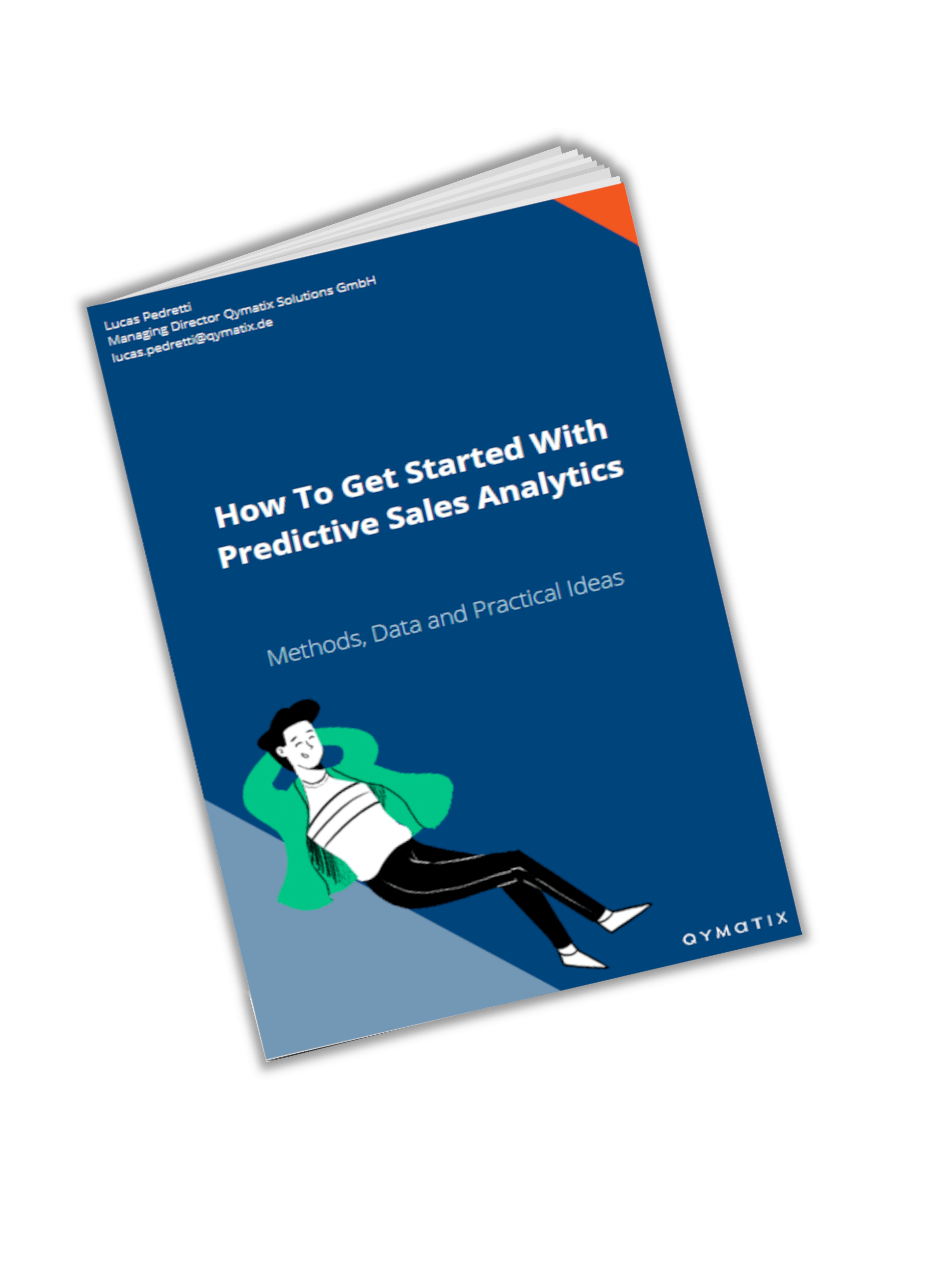Predictive Analytics CRM – A New CRM or Predictive Analytics? What comes first?

Please enter your Email address
The top 3 reasons why successful companies avoid changing their CRM and use Predictive Analytics instead
Implementing a new Customer Relationship Management System (CRM) is a minefield for B2B companies. These projects tend to last longer than planned and cost more than budgeted. In many cases, they fail altogether.
CRM vendors are quick to oversell the utopian benefits of their solutions. Companies buy them in good faith without clear and measurable expectations.
Between one- and two-thirds of all customer relationship management (CRM) projects fail, depending on the source.
However, is an entirely new CRM project the only way forward? Predictive Sales Software uses data from existing ERP and CRM applications to make sales teams more efficient faster. Besides, Predictive Sales Software underpins measurable profitable growth. B2B companies can apply artificial intelligence-based Predictive Sales Software nowadays to reduce costs and increase revenues. This predictive software includes analytics for cross-selling, churn risk and pricing in traditional and digital channels.
Many companies are considering implementing predictive analytics and ultimately decide to completely redesign their existing CRM with supposedly better features. The focus of these companies is clearly on quantity: they want to write more invoices, win more new customers and try to contact more customers. In contrast, Predictive Analytics focuses on quality: less, but more targeted customer contact with more success.
Of course, it is possible to implement Predictive Analytics in a new CRM system. However, many companies prefer a “focus project” so that several projects do not run simultaneously. So, what should you start with? A new CRM or an extension of your existing CRM by Predictive Analytics?
Let’s review three critical arguments for and against each alternative.
Reason one: Predictive Sales Software offers a faster time-to-value
The implementation of Predictive Analytics needs shorter cycles than the implementation of an entirely new CRM. Buying a Predictive Sales Software is taking an elevator. Planning and implementing a CRM software is climbing Mount Everest.
Implementing a new CRM software is for most mid-size businesses a considerable endeavour. Because three-quarters of all CRM implementation fails, management should weight in detail whether to go for a whole new CRM or to consider alternative software tools.
Because three-quarters of all CRM implementation fails, management should weight in detail whether to go for a whole new CRM or to consider alternative software tools.
You might still need to implement a new CRM. It is therefore critical to define your expect ROI and when the system should be running fully – usually known as “time-to-value”. The goal of any IT project is to minimize the “time-to-value” to realize financial benefits as quickly as possible.
I want to implement Predictive Analytics in my CRM.
Reason two: The implementation of predictive sales software comes with a significantly lower risk
The longer a project will take, the higher its risks. Replacing a CRM in a middle-size organization can last something between a month and a year, depending on complexity. Using predictive analytics in existing sales data is nowadays a matter of hours, maybe days, considering workshops and training.
Implementing predictive sales software requires a shorter time, costs less and involves fewer changes in sales processes as implementing a new CRM. As you probably know from your own experience, planning and implementing a new CRM involves a lot of time, effort and effort. Often it even leads to useless conflicts within sales and marketing teams.
Cloud technologies combining data models for machine learning, artificial intelligence, and data visualization for ERP and CRM Systems enable much faster and lower-risk IT projects.
Predictive sales analytics software enables sales managers in B2B to perform cross-selling, churn prevention and pricing analytics without suffering disruptions and with lower risk-of-non-completion.
Reason three: Predictive Sales software offers a higher (and measurable) Return on Investment (ROI)
The Return on Investment (ROI) is a powerful tool for evaluating the performance of any IT investment. Measuring the ROI of your CRM software can be difficult. It depends on anecdotal evidence and soft factors. Benefits of CRM? One in five CRM investments have ruined customer relationship, Bains and Co reported in 2001.
On the other hand, measuring the ROI of a Predictive Analytics Software is straightforward. Predictive Analytics applies data mining methods, machine learning, and artificial intelligence to make predictions concerning customers, sales leads, and products. Successful companies use it nowadays for lead scoring, churn risk analysis, pricing analytics, and cross-selling.
For example, CRM Software leaders such as Salesforce declares that CRM can improve customer retention by 27 %. This result languishes in comparison with machine learning models for customer churn being able to predict 90 % of customers correctly.
CALCULATE NOW THE ROI OF QYMATIX PREDICTIVE SALES SOFTWARE
The top 3 reasons why successful companies avoid changing their CRM and use Predictive Analytics instead – Summary.
Successful companies know how to make the most out of their existing IT landscape. Sales leaders, considering implementing an entirely new CRM system for the sake of improving sales performance should evaluate predictive analytics first.
Predictive sales analytics offers, in comparison with a CRM implementation a faster time-to-value. This point is particularly true if you buy ready-to-use software solutions. A few adjustments here and there and your sales team is ready to start selling more.
Buying software that uses your ERP and CRM data for predictive analytics represent a significantly lower risk compared with the implementation of a CRM. The latter is very long triathlon you might never complete, the former a couple of short sprints.
Lastly, predictive sales analytics offers a Higher Return on Investment (ROI). Innovative tech companies have been hammering upon this last argument for the previous two decades. Nowadays, the availability of sales data and artificial intelligence solutions make implementing predictive sales analytics affordable. Please write to us to discuss your options.
Do you have any further questions about CRM planning and implementation? We are happy to help!
Free eBook for download: How To Get Started With Predictive Sales Analytics – Methods, data and practical ideas
Predictive analytics is the technology that enables a look into the future. What data do you need? How do you get started with predictive analytics? What methods can you use?
Download the free eBook now.
- We will use this data only to contact you for discussing predictive sales KPIs. You can read here our declaration on data protection.


